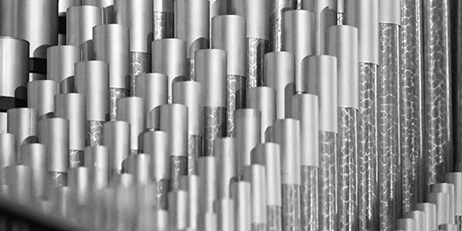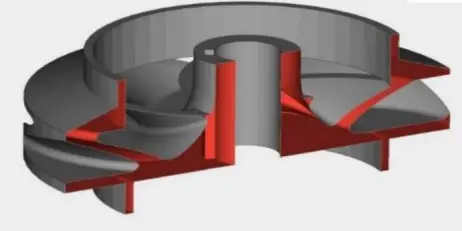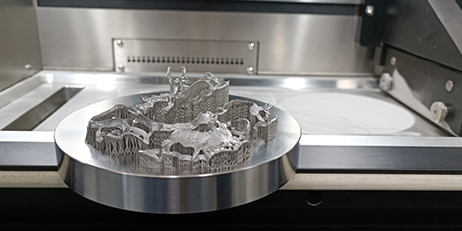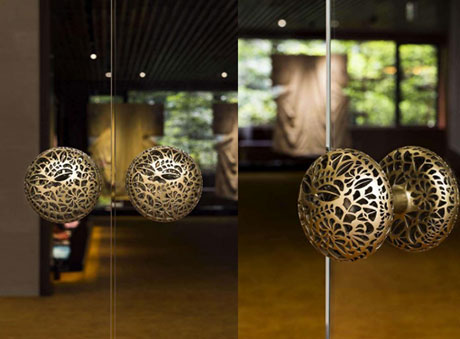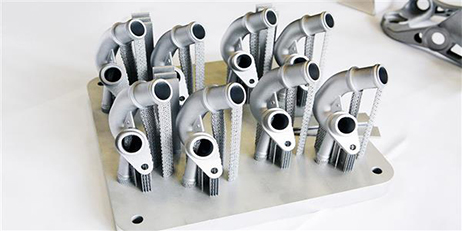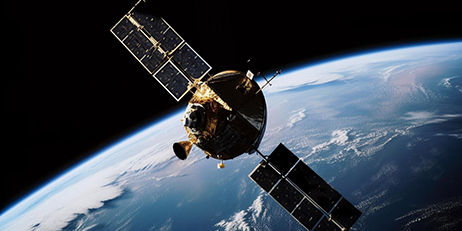Metal 3D printing technology is a process in which a metal powder bed is irradiated by a fiber laser to melt, cool, and form. It is very critical about how to choose a more suitable metal powder. This article mainly introduces the advantages of stainless steel and aluminum alloy in metal 3D printing, and provides relevant suggestions on how to choose the corresponding metal powder.
Stainless steel powder is the most commonly used material in selective laser melting (SLM) metal 3D printing. The following are the specific advantages of this powder:
1. Durability: Stainless steel powder is a strong and durable material with certain characteristics of corrosion resistance, wear resistance and high temperature resistance.
2. Versatility: Stainless steel powders are available in a variety of grades and can be customized for specific applications. This allows for the creation of highly customized parts that can meet specific performance requirements.
3. High precision: Metal 3D printing technology can produce high precision and fine parts, and stainless steel powder is ideal for achieving this level of precision.
4. Cost-effectiveness: Stainless steel powder is a relatively low-cost material in metal 3D printing, and it can help reduce costs by minimizing material waste and enabling the production of complex parts in one step.
At present, due to the characteristics of stainless steel powder, the powder is widely used in aerospace, medical, mold, automobile industry, consumer goods industry and other fields.
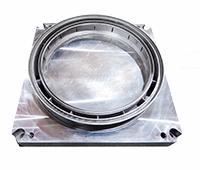
Aluminum alloy powder is another material commonly used in selective laser melting (SLM) metal 3D printing. The following are some advantages of aluminum alloy powder over stainless steel powder:
1. Lightweight: Aluminum alloy is a lightweight material that is ideal for applications where weight is important, such as the aerospace and automotive industries.
2. High strength-to-weight ratio: Aluminum alloys have a high strength-to-weight ratio, which means they are strong and durable, yet lightweight. This makes them ideal for applications requiring strength and light weight.
3. Excellent thermal conductivity: Aluminum alloys have excellent thermal conductivity, which makes them ideal for applications that require heat dissipation, such as radiators and cooling systems.
4. Corrosion resistance: Aluminum alloys have strong corrosion resistance, which makes them very suitable for use in harsh environments.
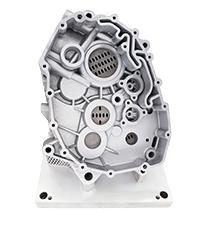
When selecting a metal powder for metal 3D printing, it is important to consider several factors to determine which metal powder is best for your specific application. Here are some key factors to consider:
1. Material Properties: The first step is to determine which material properties are required for your application. For example, if you need a high-strength part, you might consider materials like stainless steel or titanium. If you need a lighter weight part, you might consider materials like aluminum or magnesium.
2. Cost: The cost of materials is also an important factor to consider, as some materials may be more expensive than others. For example, titanium is generally more expensive than aluminum.
3. Availability: Availability of materials may also be a consideration, as some materials may be more readily available than others.
4. Powder quality: This can also have a major impact on the final part as factors such as particle size distribution, powder purity and morphology all affect the quality of the final part.
5. Printing parameters: Each material has unique printing parameters, such as laser power, scan speed, and hatch spacing, that must be optimized for each material to achieve the desired part quality.
6. Post-processing requirements: The post-processing requirements of each material may also be different. For example, some materials may require additional heat treatment or finishing processes to achieve the desired end properties.
Overall, when selecting the powders to use for metal 3D printing, it is important to consider the specific material properties required for your application, as well as factors such as cost, availability, powder quality, printing parameters and post-processing requirements. Eplus3D can customize a series of solutions for you according to your development needs, including equipment, parameters, powder, post-processing, etc.
Please feel free to contact us if you need the best metal 3D printers to increase your productivity.
